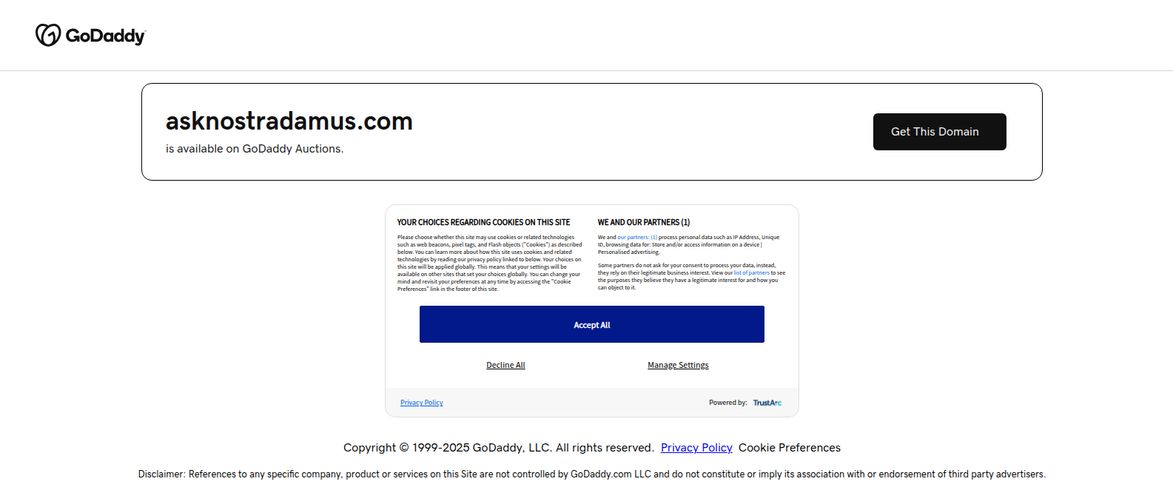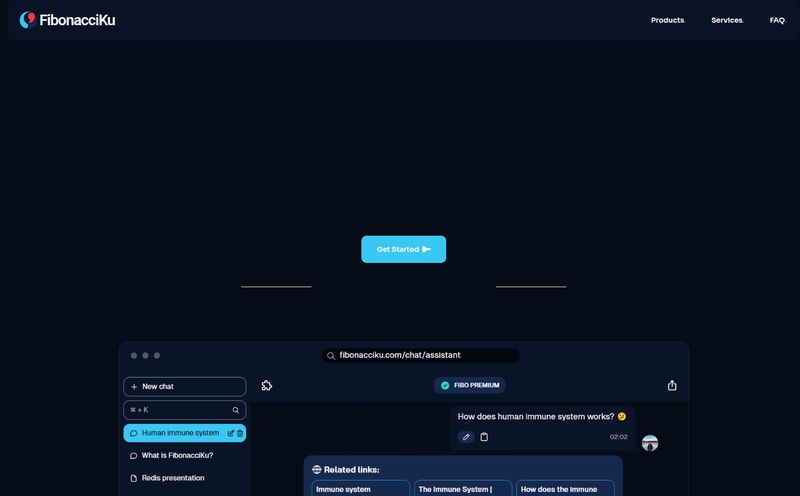We're all drowning in data. For years, the promise of 'data-driven decisions' has felt like a mountaintop guarded by gatekeepers with PhDs in statistics and a deep, intimate knowledge of Python. You've got the data, sitting right there in a perfectly organized (or maybe not-so-perfectly organized) Google Sheet. You know there are golden nuggets of insight in there—trends, predictions, customer behaviors just waiting to be discovered. But getting to them? That's the hard part.
It usually involves begging for time from the dev team, trying to decipher a YouTube tutorial on scikit-learn, or just giving up and making a pivot table that kinda-sorta answers your question. Sound familiar? I thought so. I've been in the SEO and traffic generation game for over a decade, and the gap between having data and using data has always been a massive chasm. But what if you could skip all that? What if you could wave a magic wand over your spreadsheet and have it spit out predictions?
That's the promise of the no-code AI movement, and it’s where tools like PredictEasy are stepping into the spotlight. I've been keeping a close eye on this space, and this one caught my attention because it aims to live right where so many of us do our work: Google Sheets.
What Exactly is PredictEasy? A Quick Rundown
In the simplest terms, PredictEasy is a bridge. It connects your humble spreadsheet to the massive power of machine learning, without you needing to write a single line of code. Think of it less as a complex piece of software and more as a translator. It takes the language of your rows and columns and translates it into the language of predictive models, and then translates the results back into something you can actually use—automated reports, visualizations, and even a simulator to play out 'what-if' scenarios.

Visit PredictEasy
The whole idea is to take the heavy lifting of data science—things like data preprocessing (cleaning up your messy data), building a model, and then deploying it—and automate it. For anyone who has ever tried to manually clean a dataset of 10,000 rows, the word 'automate' is just… chef's kiss.
The Features That Actually Matter
Okay, every SaaS platform has a long list of features. But which ones actually make a difference in your day-to-day? After poking around, here’s my take on what makes PredictEasy tick.
Machine Learning for the Rest of Us
This is the core of it all. The platform boasts “Automated Machine Learning” with pre-built models. What this means for you and me is that we don’t have to go through the agonizing process of choosing whether a linear regression is better than a random forest for our dataset. You feed it the data, tell it what you want to predict (e.g., customer churn, sales figures, lead quality), and it runs the numbers through its library of models to find the best fit. It’s a massive shortcut. A welcome one, at that.
Your Data, But Prettier and Smarter
I love Google Sheets, I really do. But let’s face it, its charting capabilities can feel a bit… 2010. PredictEasy comes with its own “Built-In Visualization” tools. This isn't just about making prettier bar graphs. It's about intuitive data exploration. It helps you see the patterns before you even build a model. A good visualization can tell you more in 30 seconds than an hour staring at a wall of numbers. This part of the tool is designed to spark those “aha!” moments.
From Spreadsheet to Crystal Ball
Building a model is cool, but it's useless if it just sits there. The real magic is in using it. This is where the “Rapid Deployment” and “Deploy Model Simulator” features come in. Once PredictEasy builds a predictive model, you can immediately start using it. The simulator is particularly neat. It lets you plug in different variables to see how they affect the outcome. For example, “What happens to our predicted sales if we increase our ad spend by 20% but decrease our email frequency?” Answering questions like that used to be pure guesswork. Now, it's a simulation. That's a huge upgrade.
My Honest Take: The Good, The Bad, and The... Spreadsheet-y
No tool is perfect. As much as I'm excited about the no-code revolution, it always comes with trade-offs. Here’s my no-fluff breakdown.
What I Absolutely Love About PredictEasy
The biggest win here is the sheer accessibility. The barrier to entry for predictive analytics just got lowered to the floor. The user-friendly interface is a breath of fresh air; you don't feel like you need a data science degree to click around. For small businesses, marketers, or operations managers who live in Google Sheets, this is a potential game-changer. The speed of going from a raw CSV to a working predictive model is something that would have sounded like science fiction five years ago. And the multiple integrations mean it can likely plug into the data sources you’re already using. Its a huge time saver.
Where It Could Be Better
Okay, let's be pragmatic. The reliance on pre-built machine learning models is both a blessing and a curse. It’s fantastic for speed and simplicity, but it means you lose a degree of customization. A seasoned data scientist might find it too restrictive if they want to fine-tune every little parameter of their model. You're trading granular control for convenience. Also, while it’s “no-code,” it’s not “no-brain.” You still need a basic grasp of data analytics concepts to ask the right questions. The tool can't tell you what to predict; you have to bring that business acumen to the table yourself.
Let’s Talk Money. What’s the Price of PredictEasy?
Ah, the million-dollar question. Or, hopefully, the much-less-than-a-million-dollar-a-month question. As of my writing this, PredictEasy hasn't published a public pricing page. This is pretty common for specialized B2B and SaaS tools that cater to a wide range of users, from single-person shops to large enterprises.
They likely operate on a quote-based system, tailoring a plan to your specific needs—data volume, number of users, that sort of thing. While we don't have a number, we can look at the ecosystem it lives in. We're all familiar with the Google Workspace pricing structure, which scales from a simple Starter plan to a full-blown Enterprise Plus tier. I’d wager PredictEasy follows a similar logic. It's not a one-size-fits-all tool, so the pricing probably isn't either. Your best bet is to reach out to them for a demo and a custom quote.
Who Should Actually Use This Tool?
I see a few clear winners here:
- The Scrappy Marketer: You want to forecast campaign ROI or predict which leads are most likely to convert, but you don't have a dedicated analytics team.
- The Savvy Small Business Owner: You need to manage inventory, predict customer churn, or forecast sales, and Excel formulas just aren't cutting it anymore.
- The Operations Manager: You're looking at supply chain data, trying to find inefficiencies or predict future needs, and you need answers fast.
Basically, if you're a business professional whose expertise is in your field—not in coding—and you're comfortable working within the Google ecosystem, PredictEasy is built for you.
Frequently Asked Questions about PredictEasy
1. Do I really need to know zero code to use PredictEasy?
Yes, that's the whole point. The interface is visual and click-based. However, you should have a clear idea of what business question you're trying to answer with your data.
2. What kind of data can I analyze with it?
Since it integrates heavily with Google Sheets, it's designed for structured, tabular data—the kind of stuff you'd find in a spreadsheet or a database. Think sales records, customer lists, marketing analytics, etc.
3. How does the Google Sheets integration work?
It typically works like a Google Workspace Add-on. You'd authorize it to access your data in a specific sheet, and it pulls that data into its platform for analysis. The insights and reports can then be viewed within the PredictEasy dashboard or potentially exported back.
4. What does being “IOT Ready” mean?
IOT, or the 'Internet of Things,' refers to devices that collect data. Being IOT ready suggests that PredictEasy is set up to handle real-time, streaming data that might come from sensors or other connected devices, not just static spreadsheets. This is a pretty forward-thinking feature.
5. Can I build my own custom machine learning models from scratch?
From what I can tell, no. The platform’s strength is its automated approach using pre-built and optimized models. For deep customization, you would still need traditional data science platforms and coding expertise.
6. Is my data secure with PredictEasy?
Any tool that integrates with a major ecosystem like Google Workspace has to take security very seriously. They would rely on Google's own robust security protocols for authentication and data handling. However, as always, you should review their specific privacy policy and terms of service.
The Final Word: Is PredictEasy Worth It?
For the right person, absolutely. PredictEasy isn't trying to replace data scientists. It's trying to empower the millions of other people who work with data every day. It successfully bridges the gap between complex machine learning and the practical, everyday business tool that is the spreadsheet.
If you're a business user who feels like you’ve hit the ceiling of what's possible with pivot tables and VLOOKUP, this could be the tool that takes your data analysis to the next level. It democratizes prediction, and in a world where data is king, giving everyone a key to the castle is a pretty powerful thing.
Reference and Sources
- An overview of Google Workspace Pricing Tiers - workspace.google.com/pricing.html
- A brief introduction to the scikit-learn library for context on traditional model building - scikit-learn.org



